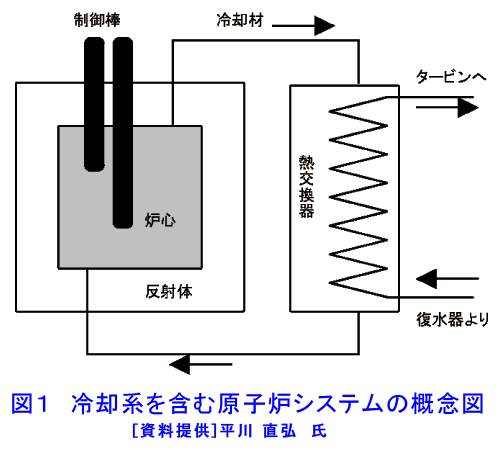
【移動太陽光発電機】
河北新報 4月5日(火)14時11分
燃料ゼロ大助かり 移動太陽光発電機フル稼働 大船渡
電力復旧のめどが立っていない岩手県大船渡市周辺地区
の避難所で、相模原市の光学部品製造「相光技研」(本
田義広社長)が贈った移動式の太陽光発電機が活躍して
いる。同社は3月18日、碁石コミュニティセンターと後
ノ入公民館の2カ所に発電機を設置した。
宇宙航空研究開発機構の関係施設がある縁から「銀河連
邦」として大船渡市と交流を続けてきた相模原市から依
頼を受けて、無償で協力した。発電機は一辺約1㍍の立
方体で、1㍍四方の太陽光パネル5枚を広げて使う。大
容量のバッテリーを搭載し、電圧百ボルト、電流30アン
ペアで10時間、出力できる。
テレビや掃除機を動かすのに使っている同センターのリ
ーダー役、及川宗夫さん「自家発電機は燃料をたくさん
消費するため、あまり長く使用できない。これは大変助
かる」と喜ぶ。
同社は「約1年前に開発した時は『電力は大災害でも 2、
3日で復旧するから使えない製品だ』と評判が悪かった。
現在、利用されているのは被災地にある2台のみで、役
立ててもらえてありがたい」としている。
※早速、ネットで下調べした(メーカに問い合わせ中)。
・山中→ キャンプや工事にも使える。
・被災地→ ご飯を炊いたりテレビをみることが可能に。
・屋外イベント・観光地→ 自動販売機の設置やイベント

【相光技研の特許例】
【課題】 従来のソーラー電源街路灯の問題点を解消し、
夜間に発光ダイオードを点灯させるのに十分な電力の充
電を確実に確保することができるソーラー電源街路灯を
提供すること。
【解決手段】 本発明に係る太陽電池パネルを備えたソー
ラー電源街路灯は、地中に植設されて垂直方向に伸びる
支柱と、支柱の上部に設けられた太陽電池パネルと、前
記太陽電池パネルで発電した電力を蓄えるバッテリーと
前記バッテリーからの電力によって点灯する発光ダイオ
ードと、前記バッテリーからの電力によって駆動する第
一及び第二モータとを備え、前記太陽電池パネルが、第
一モータによって支柱の軸線と同軸上で回動され、かつ
第二モータによって支柱の軸線に直交する軸線上で回動
されるように構成され、予め算出された太陽の方位角及
び太陽の高度に合わせて太陽電池パネルが太陽光と直交
するように、日の出から日没までの間、所定時間毎に所
定の角度で太陽電池パネルを回動させるように前記第一
及び第二モータを駆動する制御装置を備えている。


4月6日(水)6時46分
海への流出止まる=高濃度放射能汚染水―徹夜で作業・
福島第1原発
福島第1原発事故で、東京電力は6日朝、2号機取水口付
近のコンクリート製立て坑「ピット」の亀裂から海に直
接流出していた高濃度の放射能汚染水を止めたと発表し
た。ピット下の砕石層に5日午後3時すぎから、水ガラス
(止水剤)の注入を始め、延べ52人の作業員が徹夜で計
8カ所に注入した結果、6日午前5時38分に流出停止を確認
したという。ピットからの流出は2日朝発見された。コン
クリートでピットを埋めたり、ピット上流側の地下電源
ケーブル管路入り口に「吸水ポリマー」やおがくず、新
聞紙を投下したりしたが失敗。3番目の手段でようやく止
まった。

※わたしは、これは当初段階から投入されるものと考え
ていたが、第二段階で投入された。もっと早めにという
感じは残る(隔靴掻痒:かっかそうよう)。
水ガラスは、ケイ酸ナトリウムの濃い水溶液である。ケ
イ酸ナトリウムを水に溶かして加熱することで得られる。
水飴状で大きな粘性を持ち、接着剤、耐火塗料などとし
て利用される。粘土の粘性を低下させる力を持ち、粘度
調整用の添加剤として陶芸で使用される。水ガラスに塩
酸などの強酸を加えると、弱酸の遊離がおこってゲル状
のケイ酸が沈殿する。また、水ガラスに金属塩を加える
とそのケイ酸塩が生成する。この現象をケミカルガーデ
ン(Chemical garden)と言う。硬化は、ケイ酸ナトリウム
と硬化剤(水酸化カルシウム・硫酸カルシウム)を適量
混合することで硬化する。![]()
Na2SiO3 + CaSO4→Na2SO4+CaO + SiO2

【原子炉設計と儲け主義】
※遺産相続を巡ってゴタゴタしているようだがとりあえ
ず図書館で借りてきた。
「原子炉の物理」を超斜め読みした後、俯瞰具合いが悪
いので例によってウィキペディア↓することに。次に、
原子炉の設計を調べ、
Most nuclear reactors use a chain reaction to induce a controlled
rate of nuclear fission in fissile material, releasing both energy
and free neutrons. A reactor consists of an assembly of nuclear
fuel (a reactor core), usually surrounded by a neutron moderator
such as regular water, heavy water, graphite, or zirconium hydride,
and fitted with mechanisms such as control rods that control the
rate of the reaction.
Nuclear reactor physics is the branch of science that deals with
the study and application of chain reaction to induce controlled
rate of fission for energy in reactors.
■
The physics of nuclear fission has several quirks that affect the
design and behavior of nuclear reactors. This article presents a
general overview of the physics of nuclear reactors and their
behavior.
福島第一原発は、GE社の「安くつくる設計思想」でつく
られた経緯の記事を再読。
G.E. began making the Mark 1 boiling-water reactors in the 1960s,
marketing them as cheaper and easier to build — in part because
they used a comparatively smaller and less expensive containme-
nt structure.
American regulators began identifying weaknesses very early on.
In 1972, Stephen H. Hanauer, then a safety official with the Ato-
mic Energy Commission, recommended that the Mark 1 system
be discontinued because it presented unacceptable safety risks.
Among the concerns cited was the smaller containment design,
which was more susceptible to explosion and rupture from a bui-
ldup in hydrogen — a situation that may have unfolded at the Fu-
kushima Daiichi plant. Later that same year, Joseph Hendrie, who
would later become chairman of the Nuclear Regulatory Commis-
sion, a successor agency to the atomic commission, said the idea
of a ban on such systems was attractive. But the technology had
been so widely accepted by the industry and regulatory officials,
he said, that “reversal of this hallowed policy, particularly at this
time, could well be the end of nuclear power.”
In an e-mail on Tuesday, David Lochbaum, director of the Nucl-
ear Safety Program at the Union for Concerned Scientists, said
those words seemed ironic now, given the potential global ripp-
les from the Japanese accident.
“Not banning them might be the end of nuclear power,” said Mr.
Lochbaum, a nuclear engineer who spent 17 years working in
nuclear facilities, including three that used the G.E. design.
Questions about the design escalated in the mid-1980s, when
Harold Denton, an official with the Nuclear Regulatory Commi-
ssion, asserted that Mark 1 reactors had a 90 percent probability
of bursting should the fuel rods overheat and melt in an accident.
Industry officials disputed that assessment, saying the chance of
failure was only about 10 percent.
Michael Tetuan, a spokesman for G.E.’s water and power division,
staunchly defended the technology this week, calling it “the indu-
stry’s workhorse with a proven track record of safety and reliab-
ility for more than 40 years.”
Mr. Tetuan said there are currently 32 Mark 1 boiling-water rea-
ctors operating safely around the globe. “There has never been a
breach of a Mark 1 containment system,” he said.
Several utilities and plant operators also threatened to sue G.E.
in the late 1980s after the disclosure of internal company docum-
ents dating back to 1975 that suggested that the containment vessel
designs were either insufficiently tested or had flaws that could
compromise safety.
The Mark 1 reactors in the United States have undergone a variety
of modifications since the initial concerns were raised. Among t
hese, according to Mr. Lochbaum, were changes to the torus —
a water-filled vessel encircling the primary containment vessel
that is used to reduce pressure in the reactor. In early iterations,
steam rushing from the primary vessel into the torus under high
pressure could cause the vessel to jump off the floor.
In the late 1980s, all Mark 1 reactors in the United States were
also retrofitted with venting systems to help reduce pressure in
an overheating situation.
It is not clear precisely what modifications were made to the
Japanese boiling-water reactors now failing, but James Klappr-
oth, the chief nuclear engineer for General Electric Hitachi, said
a venting system was in place at the Fukushima plants to help re-
lieve pressure.
The specific role of the G.E. design in the Fukushima crisis is
likely to be a matter of debate, and it is possible that any reactor
design could succumb to the one-two punch of an earthquake and
tsunami like those that occurred last week in Japan.
Although G.E.’s liability would seem limited in Japan — largely
because the regulatory system in that country places most liabil-
ity on the plant operator .
※ IAEA-TECDOC-1544
※ Nuclear Power Plant Design Project
※ Japan reactor design caused GE engineer to quit
※ Atomunfall: Ausbreitung von Radioaktivität in Japan
■

















